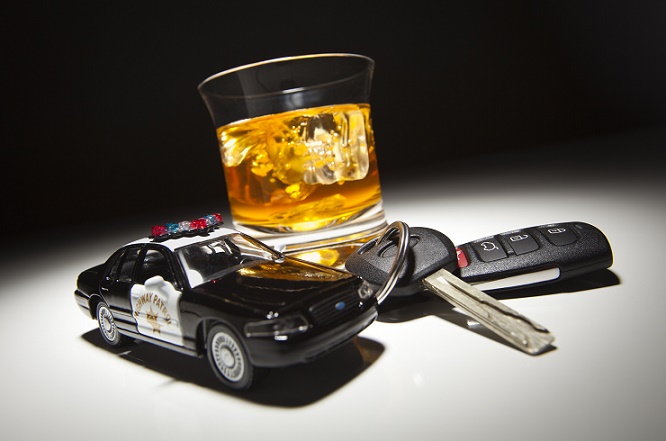Alcohol 101
There are numerous things that can pull your attention away from the road while you're driving, so we should try our best not to make it worse. Unfortunately, in 2010, there were 17,748 crashes that occurred as a direct result of alcohol consumption in Florida (FLHSMV, 2010).

Defining the "Standard Drink"
When considering a drink, remember that the average alcoholic drink is equal to 14 grams of pure alcohol which can be found in:
- 12 oz beer with 5% alcohol content
- 8 oz malt liquor with 7% alcohol content
- 5 oz wine with 12% alcohol content
- 1.5 oz (a "shot") with 40% alcohol content (such as gin, rum, vodka or whiskey)
The Trouble With Mixed Drinks
Some drinks have different levels of alcohol in them which can make them unexpectedly dangerous. Many of the popular mixed drinks are much stronger than a standard drink, which means that it will take less of them in order to reach the legal limit.
BAC Legal Limit
Blood alcohol content, commonly referred to as BAC is the standard tool for setting the legal limit for intoxication while driving. After consuming an alcoholic beverage, molecules of alcohol pass through the stomach lining and mix in with the bloodstream. In the United States, the legal BAC limit is 0.08 BAC, however, many countries have lower limits due to the fact that impairment starts far earlier than at 0.08 BAC.
How Alcohol Impacts Drivers
- 0.02 BAC (Approx. 1-2 drinks): Loss of judgement, relaxation, altered mood which results in the decline of visual functions and reduced ability to perform different tasks at the same time
- 0.05 BAC (Approx. 3 drinks): Significantly impaired psychomotor performance; slower eye movements result in a reduced ability to track moving objects, lower visual perception, difficulty steering, poor reaction time and trouble with information processing makes them unable to effectively respond to emergency driving situations
- 0.08 BAC (Approx. 3+ drinks): Poor muscle coordination, which means that their balance, speech, reaction time, vision and hearing are all significantly impaired which makes them have a lot of trouble detecting danger; their reasoning, self-control and memory are impaired resulting in reduced concentration, short-term memory loss, reduced image processing capabilities and loss of speed control (CDC, n.d)
The effects that alcohol has on your body has to do with your gender, weight, tolerance level, if you were on medication or fatigued, as well as many other factors. With that in mind, the number of drinks it takes to reach the different BAC levels is different for each individual, but remember that impairment begins early on.
Sources:
FLHSMV. (2010). Traffic Crash Statistics Report 2010.
http://www.flhsmv.gov/hsmvdocs/CS2010.pdf
DADO. (n.d). Blood Alcohol Content (aka BAC) A DrinkingAndDriving.Org
Article.
http://www.drinkinganddriving.org/Articles/blood-alcohol-content.html
CDC. (n.d) Effects of Blood Alcohol Concentration (BAC).
http://www.cdc.gov/motorvehiclesafety/impaired_driving/bac.html